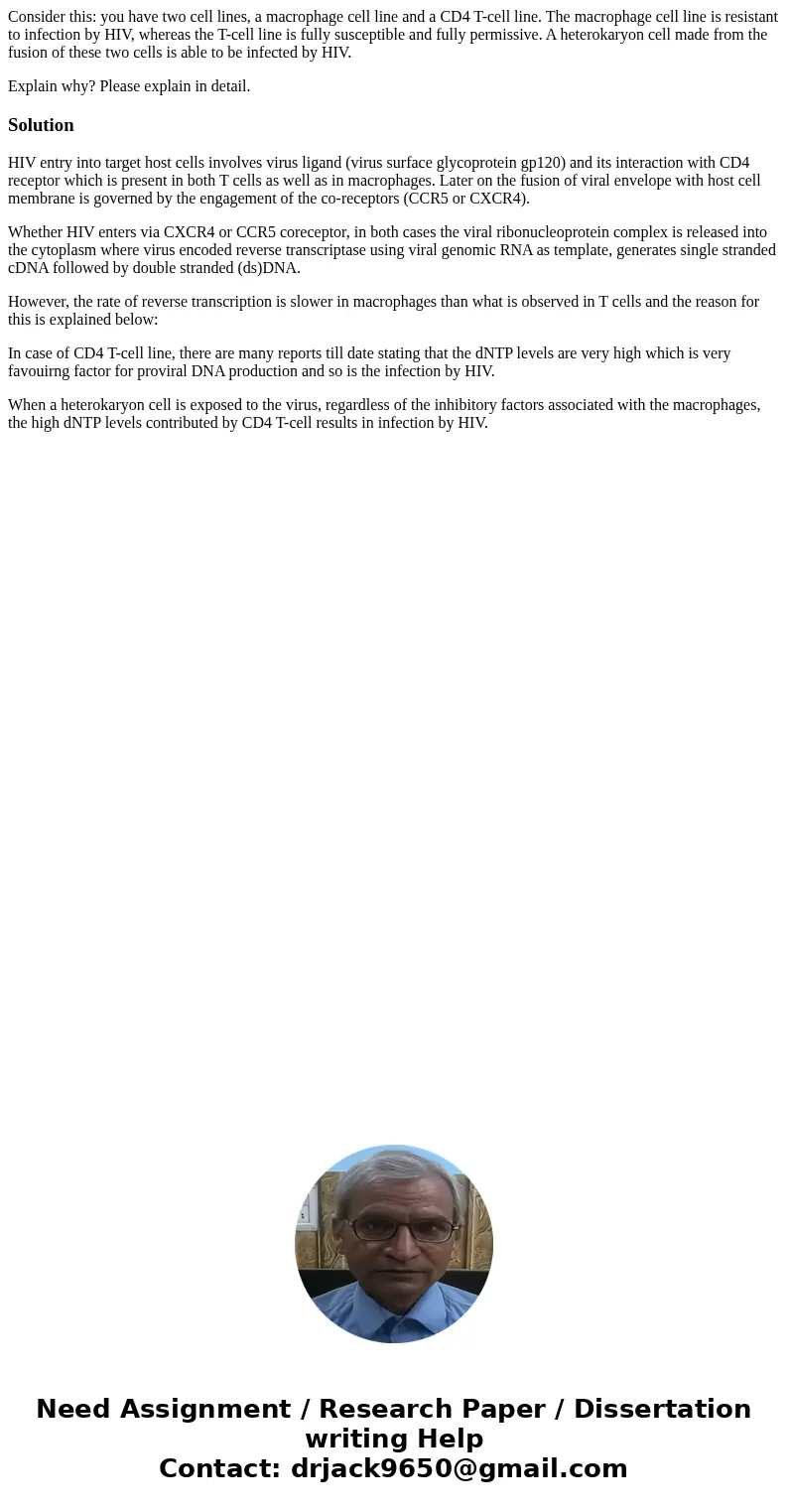Consider this you have two cell lines a macrophage cell line
Consider this: you have two cell lines, a macrophage cell line and a CD4 T-cell line. The macrophage cell line is resistant to infection by HIV, whereas the T-cell line is fully susceptible and fully permissive. A heterokaryon cell made from the fusion of these two cells is able to be infected by HIV.
Explain why? Please explain in detail.
Solution
HIV entry into target host cells involves virus ligand (virus surface glycoprotein gp120) and its interaction with CD4 receptor which is present in both T cells as well as in macrophages. Later on the fusion of viral envelope with host cell membrane is governed by the engagement of the co-receptors (CCR5 or CXCR4).
Whether HIV enters via CXCR4 or CCR5 coreceptor, in both cases the viral ribonucleoprotein complex is released into the cytoplasm where virus encoded reverse transcriptase using viral genomic RNA as template, generates single stranded cDNA followed by double stranded (ds)DNA.
However, the rate of reverse transcription is slower in macrophages than what is observed in T cells and the reason for this is explained below:
In case of CD4 T-cell line, there are many reports till date stating that the dNTP levels are very high which is very favouirng factor for proviral DNA production and so is the infection by HIV.
When a heterokaryon cell is exposed to the virus, regardless of the inhibitory factors associated with the macrophages, the high dNTP levels contributed by CD4 T-cell results in infection by HIV.

 Homework Sourse
Homework Sourse